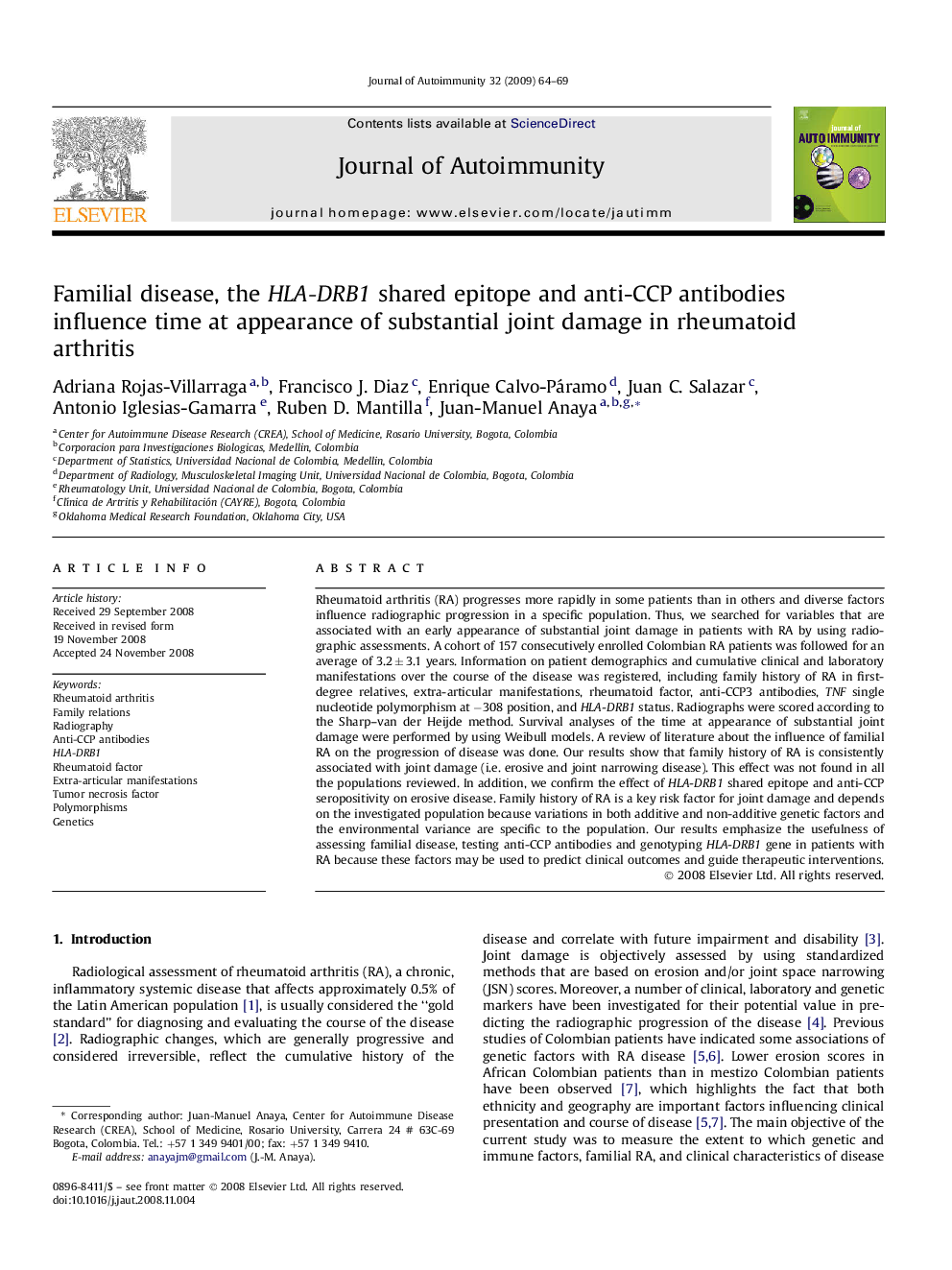| Article ID | Journal | Published Year | Pages | File Type |
|---|---|---|---|---|
| 3368292 | Journal of Autoimmunity | 2009 | 6 Pages |
Rheumatoid arthritis (RA) progresses more rapidly in some patients than in others and diverse factors influence radiographic progression in a specific population. Thus, we searched for variables that are associated with an early appearance of substantial joint damage in patients with RA by using radiographic assessments. A cohort of 157 consecutively enrolled Colombian RA patients was followed for an average of 3.2 ± 3.1 years. Information on patient demographics and cumulative clinical and laboratory manifestations over the course of the disease was registered, including family history of RA in first-degree relatives, extra-articular manifestations, rheumatoid factor, anti-CCP3 antibodies, TNF single nucleotide polymorphism at −308 position, and HLA-DRB1 status. Radiographs were scored according to the Sharp–van der Heijde method. Survival analyses of the time at appearance of substantial joint damage were performed by using Weibull models. A review of literature about the influence of familial RA on the progression of disease was done. Our results show that family history of RA is consistently associated with joint damage (i.e. erosive and joint narrowing disease). This effect was not found in all the populations reviewed. In addition, we confirm the effect of HLA-DRB1 shared epitope and anti-CCP seropositivity on erosive disease. Family history of RA is a key risk factor for joint damage and depends on the investigated population because variations in both additive and non-additive genetic factors and the environmental variance are specific to the population. Our results emphasize the usefulness of assessing familial disease, testing anti-CCP antibodies and genotyping HLA-DRB1 gene in patients with RA because these factors may be used to predict clinical outcomes and guide therapeutic interventions.
